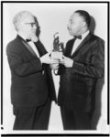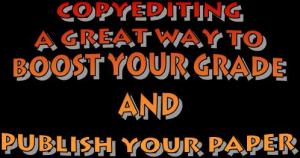Why is it that schoolmarms (do people still use that word?) love teaching their pupils to memorize, or at least study, Abraham Lincoln’s Gettysburg address? How did it become a fundamental element of our culture? I’d wager that people are more likely to correctly complete the line, “Four-score and seven years ago…” than they are to know the name of any hero who fought on that battlefield.
Lincoln did more than eulogize the fallen soldiers at Gettysburg. He took his audience on a cyclical tour of national history and mission. His speech resembles the cyclorama exhibit at the battlefield today, in which viewers stand in the center of a fully-enclosed round mural of the battle, through which a tour guide retells Gettysburg’s stories. In Lincoln’s speech, aptly remembered as “The Gettysburg Address,” the audience returns to that battlefield, that pivotal point in our national history, and recalls the past, present, and future of the American adventure.
PAST: The speech opens with an elegant reference to the signing of the Declaration of Independence. Why not the signing of the Constitution? After all, the Civil War was about slavery and central government, Constitutional matters not mentioned in the Declaration. But Lincoln went beyond the war and recalled our founding principle of human equality. While the meaning of the Constitution and the Civil War would change over the years, the basic impulse of the nation toward equality would not.
This is also a matter of faith. The speech in general is very religious (even though G-d is not mentioned until the last sentence). Despite all questions of legal authority, we as a country believe that a Creator made all men equal, with the inalienable rights to life, liberty, and the pursuit of happiness. In order to re-dedicate the nation – standing, as it were, at Gettysburg – Lincoln returns to the country’s basic faith.
Present: With the national principle stated, Lincoln then proceeds to discuss the purpose of the gathering at Gettysburg. He returns his audience from the halls of Philadelphia to the great war engulfing the nation and the spilled blood still soaking into that solemn battlefield. Another blogger, Nick Morgan, points out that the speech powerfully repeats the rather simple word “here.” Lincoln also drives the location and the immediate objective home with his famous three-tiered line (another powerful repetition): “we cannot dedicate, we cannot consecrate, we cannot hallow this ground.” To stand where the heroes of Gettysburg stood, or even to recall the meaning of the Civil War, is truly an incredible burden.
Reading this part of the speech makes you wonder – like the viewer in the middle of the gore-infested cyclorama at Gettysburg – how we can possibly honor the heroes of this war? How can we be fit for that task?
Future: But then Lincoln finishes the speech with an astounding vision, a response to that feeling of impotence: we must dedicate ourselves to completing the task of those who’ve died fighting for our national faith in human equality. If we heed this message, we can ensure
“that these dead have not died in vain: that this nation under G-d shall have a new birth of freedom; and that the government by the people, for the people, shall not perish from the earth.”
This cyclorama type of speech lends Lincoln’s words the great gift of longevity, of retaining meaning even after the central point – the battlefield itself – has been largely forgotten. Gettysburg is no longer known for shifting the winds in the Civil War; it is known for the great re-dedication of our national faith that occurred in the wake of the battle.
Sources:
Connors, Tiffany. “How the Gettysburg Address Worked.” HowStuffWorks. http://history.howstuffworks.com/historical-events/gettysburg-address5.htm.
“The Gettysburg Cyclorama.” National Park Service. http://www.nps.gov/gett/historyculture/gettysburg-cyclorama.htm.
Morgan, Nick. “The Greatest 250-Word Speech Ever Written.” Public Words. April 15, 2009. http://publicwords.com/the-greatest-250word-speech-ever-written.
Zimmer, John. “The Gettysburg Address: An Analysis.” Manner of Speaking. November 19, 2010. http://mannerofspeaking.org/2010/11/19/the-gettysburg-address-an-analysis.
Grade-school teachers often assess students’ writing on the breadth of their vocabulary, rather than on how they utilize the vocabulary they know.
Vocabulary is a skill well worth teaching, especially in English because we have an enormous array or words carrying similar meanings. An English thesaurus can seem cavernous, constantly taking you on new routes to discovering words you never knew existed.
Yet, obsessing over vocabulary can make us forget that language is an art form. Art can be beautiful without flourishes. You don’t need an immense variety of words to write a beautiful sentence. Prose with the simplest vocabulary often makes the deepest impact.
Abraham Joshua Heschel in his The Prophets is an impressive master of simple vocabulary, particularly in his verbs:
“What impairs our sight are habits of seeing as well as the mental concomitants of seeing. Our sight is suffused with knowing, instead of feeling painfully the lack of knowing what we see. The principle to be kept in mind is to know what we see rather than to see what we know.”
Notice that he repeats two incredibly simple verbs: to see and to know. They form the core of these sentences and Heschel builds the rest of the phrases on top of them, allowing the reader to focus on the connection between sight and knowledge.
In truth, Heschel might have refined his point further by delving into different types of sight and knowledge. The concepts of myopia and intuition seem particularly relevant to his argument. But such complicated vocabulary would distract readers from the depth of his point, leaving them confused and searching for the core elements of the sentences.
My point: Don’t throw the thesaurus away, but be careful not to disregard the basics.
In recognition of Martin Luther King, Jr.’s birthday, learn more about his philosophical and activist ally, Abraham Joshua Heschel.
I’m not sure if there is a technical name for the material that follows the main articles in an academic journal. Flip the journal past the last headline article and you often find a selection of brief dispatches, opinion pieces, organizational news, and/or book reviews.
Typically, unless you’re looking at a top-selling journal, the book reviews are reader submissions, not staff pieces. And they’re usually not peer-reviewed. In fact, writing a book review is often the best way for an up-and-coming academic to contribute to the discipline.
Since book reviews are in the back of the journal and they don’t usually earn their authors cover-page billing, it’s tempting to pass them off as unimportant. Bad idea. We’ve all read our share of thoroughly time-wasting — or worse, pathetically uninformed — book reviews. Besides adding little to the discipline, poorly-written book reviews earn disrespect from all authors (not just the author whose book you’re critiquing) and show how little you care about the topic. Write them well or don’t write them. Or, as we say at Letter Perfect Copyediting, if your paper’s worth writing, it’s worth writing it well!
There are two main types of book reviews: (1) general reviews that often get published in book review-only journals and newspapers (and now news-websites), and (2) academic reviews that usually appear in the back of research journals. The rest of this installment will focus on the general reviews and hopefully I’ll write a piece on academic reviews by the end of the week.
Let’s take a look at a top-of-the-line general review of Pinsker Kaganovich’s (a.k.a. Der Nister) Regrowth: Seven Tales of Jewish Life Before, During, and After Nazi Occupation (trans. Erik Butler). The review is written by Naya Lekht, a UCLA Ph.D. candidate in Slavic Languages and Literatures.
The beauty of this book review is that Lekht’s style is more storytelling than description. She talks about the author’s background and legacy and draws the reader into the text with an engaging few paragraphs about why this book was written and why the topic is relevant to readers today.
As her story continues, Lekht selects a few of the most notable features of the author’s style and places them in their historical context. One of the short stories tells of Der Nister’s wartime nationalism; another reflects his “powerful call for vengeance.” This is where description really helps fill out the story, as an aid to the story-telling. Even when Lekht describes the author’s word choice and imagery she ensconces them in the story of the Der Nister’s struggle with his times and his literary development.
The lesson: when you sit down to write a general book review, don’t think about it as a book review. Dry reviews are a thing of the past, now that anybody can get a decent gist of the book and its quality by looking up the reviews on Amazon.com. To make it interesting, to gain the readers’ attention, you have to tell an engaging story.
The reviewer sampled here praised Der Nister’s book and offered no criticism. In a general review, this is acceptable, but only if you really love the book. Otherwise, be sure to point out its flaws, but do so within the context of the story. How might you explain the author’s biases and flaws? What did the author miss that readers like yourself want? Why might the publisher have used a shabby print format?
The author, book, and publisher can all be characters in your story and it might require some research to develop them responsibly. But done properly, a well-written book review can engage the reader from start to finish and can build the reviewer’s reputation as a thoughtful contributor to the knowledge of their field.
Thank you to everyone who participated in the ASMEA (Association for the Study of the Middle East and Africa) conference over this past weekend. I had a ball and spread the gospel of copy editing to many outstanding scholars: there’s no sense in pouring your blood and sweat into researching and writing about a topic only to publish it with mistakes that distract readers, make them grumble, or drown out your arguments.
Now that ASMEA is over and the Jewish holidays are finished until Hannukah, I’ll be back to posting as soon as possible!
An absolute must-read this season for anyone interested in Israeli politics is Etgar Keret’s mid-September column at Tablet Magazine, “Summer Heat“. The simplicity of its structure–a reflection on the Summer 2011 social protests, as told through the experiences of a child–masks a vibrant and elegant commentary on the beginnings of a revolution that swept the country this year.
Ordinarily I’d give the author full credit and kudos, and I imagine he should receive much of the recognition. But as this article appeared on Tablet Magazine as a translation, I am also compelled to recognize the superb translation skills of Sondra Silverston.
One passage in particular stands out above all the rest for its eloquence:
In retrospect, the fact that almost all of the various groups in this divided society could stand shoulder to shoulder and shout the same slogans is nothing short of a miracle. In the not very distant past, those same groups had occupied the same space only to clash and hurl insults at each other.
The concept of unity is expressed not only in the content of these sentences, but also in their translator’s word choice: the key words and phrases all begin with the letter ‘s’: “society,” “stand shoulder to shoulder,” “shout the same slogans,” “short,” and “same groups had occupied the same space.” By repeating the letter over and over again–literary scholars call this alliteration–the tone of the sentence expresses unity, a unity so glaring it nearly smacks the reader in the face.
Alliteration can signal a variety of meanings (e.g., unity, rapidity, conflict), but it primarily identifies the alliterated words as the key movers of the text. In this paragraph, the alliterated words (listed above) all imply an astonishing, visible unity. The fact that an “s” also begins the word “summer,” the primary setting of the author’s reflections and a constant trope of the article, constantly revives and reinforces the alliteration throughout the text.
On the notion of setting, there is another writing lesson to be found in this article. The author returns to his setting in every paragraph, pulling the reader back to the focal point of the article: the significance of the summer 2011 protests. Many authors (myself included) have a tendency to digress and to neglect their main setting, and it is important to recognize that in a persuasive, emotional appeal such as “Summer Heat,” power often derives from staying perfectly on-target.
Grammar Lesson of the Day: How to Write Seasons
 When writing the names of the seasons–winter, spring, summer, autumn/fall–most people don’t quite understand when to use capital letter and when to use lowercase ones. As a general rule of thumb, Kate Turabian’s A Manual for Writers (a handy reference for copy editors like myself) suggests not capitalizing the names of the seasons in text, though you should capitalize names of days of week, months, and holidays.
When writing the names of the seasons–winter, spring, summer, autumn/fall–most people don’t quite understand when to use capital letter and when to use lowercase ones. As a general rule of thumb, Kate Turabian’s A Manual for Writers (a handy reference for copy editors like myself) suggests not capitalizing the names of the seasons in text, though you should capitalize names of days of week, months, and holidays.
On the other hand, when the name of a season appears as part of a formal name, such as the Summer Olympics, Winter Wonderland Park, or Baseball Spring Training, you use capital letters. Some people also capitalize the names of seasons in slightly less formal names, such as Autumnal Equinox, or Winter Solstice, though this use is not universal.
Also, Kate Turabian cautions writers that, even though they should not capitalize the names of the seasons in the main text, they should always capitalize them in the references and notes sections when describing publication dates.
For more on the subject of how to properly use the season names, and for the difference between “autumn” and “fall,” see Geoff Pope’s article on Grammar Girl.
Reference:
Turabian, Kate L., A Manual for Writers of Research Papers, These and Dissertations, 7th ed. (Chicago: University of Chicago Press, 2007). See sections 19.2.5 and 22.1.2.
What is libel? According to Webster’s, libel refers to “a written or spoken statement or a representation that gives an unjustly unfavorable impression of a person or thing,” or the act of producing such a statement or representation.
How do we draw the line between libel and opinion? Frequently, this boils down to the copy editing. A carelessly attributed statement here or an improper tone there, and you could overstep the line into libel, an act with potentially criminal implications.
The trick is that an unjust statement presented as fact is potentially libelous, but an expression of opinion is not. Opinion is generally protected under free speech. Negative opinions can be written off as slander, but that’s a whole separate issue.
In grammar school, we teach students not to write “In my opinion,…” in their essays. We tell them the readers will know that their statements are opinion and it’s not necessary to constantly state as such. In truth however, it can be difficult to tell where reporting evidence ends and stating opinions begins. It’s often the copy editor’s job — as a fresh pair of eyes who doesn’t know the author’s intention before reading the text — to make sure the difference is easy to distinguish and protect the author from unwarranted accusations!
Check out this link for an overview of how libel can work its way into your writing: http://www.copyediting.com/Article.php?art_num=4502
Which sentence employs the more grammatically pleasing structure?
- John Denver is remembered for his passionate music, his effervescent spirit, and his love of nature. OR
- John Denver is remembered for his passionate music, the effervescence of his spirit, and his love of nature.
Most readers will prefer the first sentence because the descriptions run smoothly (possessive pronoun, adjective, noun). In the second sentence, “the effervescence of his spirit” breaks away from the pattern and forces the reader to readjust his comprehension.
Every college writing course pounds this form of parallel structure (or parallelism) into students’ pens. But parallelism doesn’t stop at the period. For the experienced writer, it can extend throughout a whole paragraph, or even a whole argument. My favorite example is Martin Luther King, Jr.’s famous “I Have a Dream” speech in which he used a driving, emotional “key phrase” in every sentence. (If you listen closely, he also used parallel inflection to deliver the lines.)
How does parallel structure apply to writing biographical articles?
Writing a biographical article for an online journal or a newspaper is inherently difficult, because the author must not only maintain his readers’ interest through all aspects of the story but also advance his main argument at every juncture in the narrative. By employing parallel structures at key points in the article, the author can create a recurring rhythm. Just as the chorus of a song brings the listener back to the overall theme after every stanza, a recurring rhythm in a biography brings the reader back to the argument after every episode.
But enough of my explanation. Let’s have a look at a fantastic–and, at a whopping 5,000 words, lengthy–article from Tablet Magazine. This is how Allison Hoffman ends each of her three main sections. (In order to show the types of parallel structures used, I will highlight them with differet font colors.)
1. As one long-time observer of Israeli politics noted, “If you look at Ron [Dermer], you see Bibi [Netanyahu].” This week, when the prime minister addresses the member states of the United Nations, amid heated debate and a potential vote on Palestinian statehood, the face the world will see will be Netanyahu’s, but the words they hear—many of them, at least—will be Dermer’s.
2. By that time, Dermer was known as the country’s leading expert on the Russian vote, and during the campaign, Sharansky offered his protégé’s expertise to Netanyahu’s faltering leadership campaign. According to Sharansky, Netanyahu was unnerved by the hard news Dermer delivered. “Bibi calls me and says, this guy [Dermer] really hates me,” Sharansky said. “But the next time they met they fell in love.”
3. That spring, nearly a decade after arriving in Israel, Dermer was dispatched to Washington in his first official government capacity, as the Israeli Embassy’s minister for economic affairs, under the auspices of Netanyahu, who was then serving as minister of finance under Ariel Sharon. Taking the job required Dermer, at 33, to give up his American citizenship. By then he had remarried—his wife, Rhoda, is a Yale-trained lawyer—and become a father. In a column for the New York Sun, Dermer offered a public goodbye: “I will never renounce America or its people. As a faithful son of America, I will never betray its ideals. In serving the State of Israel and in working to secure our common future, I will champion those ideals all of my life. May God forever bless America.”
The texts in maroon represent a classical parallel structure: a chronological adjective phrase preceding the subject of the sentence. Each of these comes at or near the beginning of the paragraph, setting the stage for the repeated idea.
In blue we find the repeated characters: Ron Dermer, Bibi Netanyahu, and in the second section, Natan Sharansky.
The phrases in olive all describe negative incidents that provide the contexts for the paragraphs’ main points.
Lastly, the pink texts deliver the paragraphs’ main points, all of which pair a negative perception with a positive reality. By filling these end-of-section paragraphs with similar structures, Hoffman signaled a return to the nuanced influence of Dermer’s American ideas (he’s a native Floridian on the Israeli Prime Minister, Bibi Netanyahu.
As a copy editor here at Letter Perfect Copyediting, part of my job is to strengthen authors’ rhythms. Personally, I would have recommended tidying up the parallel structures a bit to make them even more clear. As they stand, the parallels are a little difficult to detect and, although subtlety has advantages, it is more important to draw readers’ attentions to the main argument.
According to Donald Miller, a writer should write to his readers as though he loved them, as though he cared deeply about how his words will affect their lives.
Unfortunately, writing a book or an article is not as simple as writing a letter to a loved one. Loved ones — precisely because they know each other well — share a language. It’s not just terms of endearment; it’s a whole lexicon and grammar that together attribute emotions to the written word in a way that reflects the individuals’ experiences together.
Except for columnists with devoted audiences (how we envy those writers!), authors do not have the luxury of sharing an intimate language with their readers. The writer has to forge an intimate relationship out of the space between the anonymous reader’s eyes and the page. In this task, proper word usage and standardized grammar are an author’s bread and butter — they create the space for intimacy to grow.
But threatening to imperil that intimacy are wordy sentences, improper punctuation, awkward turns of phrase, misspelled words, and so forth. They distract the reader from the content and hurt the author’s chance of building an intimate relationship. Keen attention to detail might protect the writer from these dangers. Yet an obsession with detail might also distract him from the content of the relationship he hopes to build with readers.
This is where I, as a copy editor, can really aid the author’s task. I take what the author writes — the content — and fine-tune the delivery. That way, the author can focus on formulating the ideas and rely on me to clean up any technical blunders.
Academic writing is particularly tricky for the author. The readers, usually fellow scholars and often superiors, rely on specific writing and citation styles that suit their particular fields (APA, MLA, Chicago, etc.). Any deviation from the preferred style can be seen as unprofessional, even disrespectful of the field. With this kind of pressure, it’s not surprising that most academic writing is pretty dry! All too often, the pressure to conform to a style overpowers the author’s passion and Donald Miller’s advice, “Love your reader,” becomes an unreachable goal.





